Mobile banking, including digital banking in rural India, has become a transformative force in advancing financial inclusion across rural areas. In regions where physical banking infrastructure is sparse, mobile banking provides accessible, affordable alternatives that eliminate the need for traditional branches. This shift has been accelerated by the widespread adoption of smartphones and increasing mobile internet penetration, enabling millions in remote areas to participate in digital finance.
India’s push for digital transformation through initiatives like Digital India and BharatNet has set a solid foundation. These initiatives expand high-speed internet connectivity and promote digital literacy in underserved regions, laying the groundwork for mobile banking adoption. Mobile banking platforms now allow for digital KYC, instant money transfers, and digital account openings—all contributing to reduced operational costs and increased reach.
Recent research shows a 200% surge in mobile banking transactions across rural India within the last three years, marking a significant shift in consumer behavior and financial accessibility.
Evolution of Mobile Financial Services
Over the years, mobile financial services have evolved into comprehensive banking solutions. The development of user-friendly mobile applications in local languages has made banking more inclusive. These apps are optimized for ease of use, helping rural populations navigate financial tools without needing prior experience or English proficiency.
According to a 2022 report by Assocham and PwC, the mobile banking transaction volume in rural areas grew by over 200% in just three years. This evolution is not just about numbers but also about impact. Partnerships among governments, financial institutions, and tech providers are shaping mobile financial ecosystems that cater to unique rural challenges.
The shift has also been instrumental in enabling digital savings, agricultural lending, and insurance access for rural users. Mobile banking has become a key element of rural development, integrating communities into the formal economy.
Growth in Rural Adoption Rates
The rise in rural adoption is driven by better infrastructure, government programs, and industry efforts to localize mobile financial tools. The Reserve Bank of India (RBI) noted in its 2023 report that internet subscriber growth in rural areas is set to increase substantially. This projection aligns with the growing use of mobile banking applications.
The success of programs like Digital India and BharatNet shows the effectiveness of collaborative approaches. These initiatives directly enhance digital access and digital literacy, essential ingredients for mobile banking adoption.
The fusion of financial technology and rural accessibility has dramatically reduced the need for branch visits. Users now transfer funds, pay bills, and check balances from their homes using localized mobile platforms.
Benefits of Mobile Banking in Rural Areas
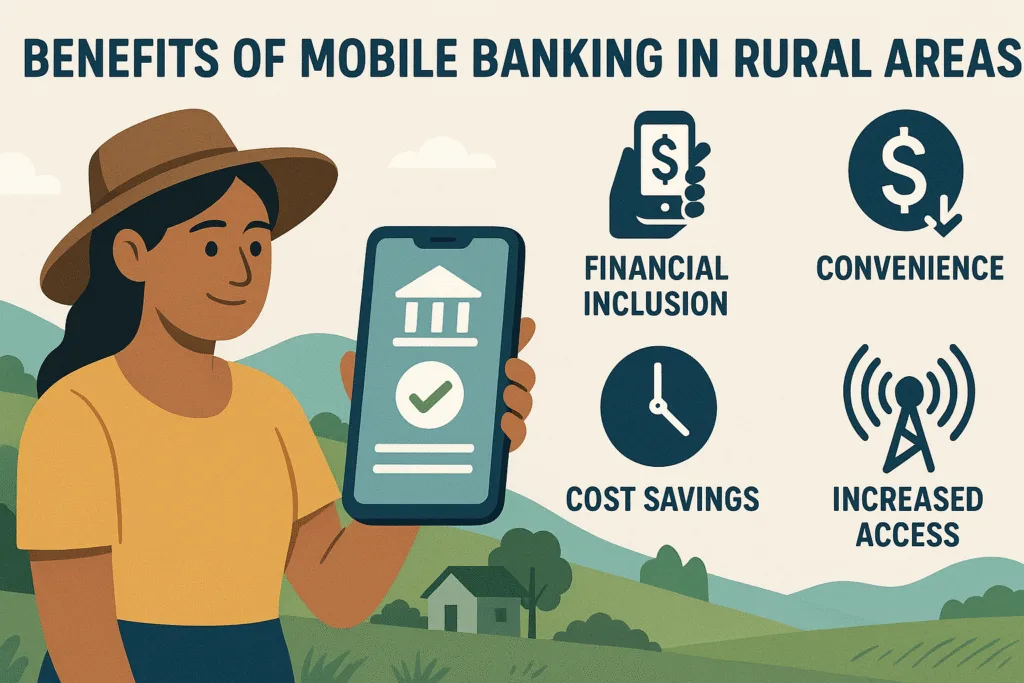
Mobile banking offers a multifaceted solution to financial exclusion. Its cost-effectiveness is a major advantage. Traditional banks often avoid rural expansion due to the high cost of physical infrastructure. Mobile banking bypasses these barriers.
The ecosystem is growing rapidly, supported by strategic partnerships between banks and fintechs. These partnerships allow mobile banking platforms to expand service offerings, from microloans to insurance and agricultural support tools.
The proliferation of smartphones and mobile networks has made mobile banking accessible to small farmers, rural merchants, and local service providers. In just a few clicks, they can manage finances and grow their businesses.
Increased Financial Inclusion
Mobile banking addresses key barriers to financial inclusion, especially for small and marginal farmers. These users often lack traditional credit histories or collateral, making them ineligible for conventional loans. Mobile banking provides them with credit scoring through alternative data and digital footprints.
The services empower rural populations to trade, save, and access formal financial services. This progress supports the UN Sustainable Development Goals, particularly in reducing poverty and ensuring inclusive economic growth.
With over 200% growth in mobile transactions, rural India exemplifies how mobile banking can integrate underserved communities into the financial mainstream.
For more info on this subject go check out our websites blog page PrimeFinanceTech
Empowerment of Small Businesses
Small rural enterprises benefit significantly from mobile banking. Without needing physical branches, business owners can perform essential functions like receiving payments, paying suppliers, and securing working capital.
Increased smartphone use allows these businesses to leverage digital finance tools to improve cash flow, expand inventory, and serve customers better. Apps available in vernacular languages enhance usability for business owners with limited English proficiency.
Collaborations between fintech and traditional banks create dedicated business tools like microloans, savings plans, and business insurance.
Convenient and Secure Transactions
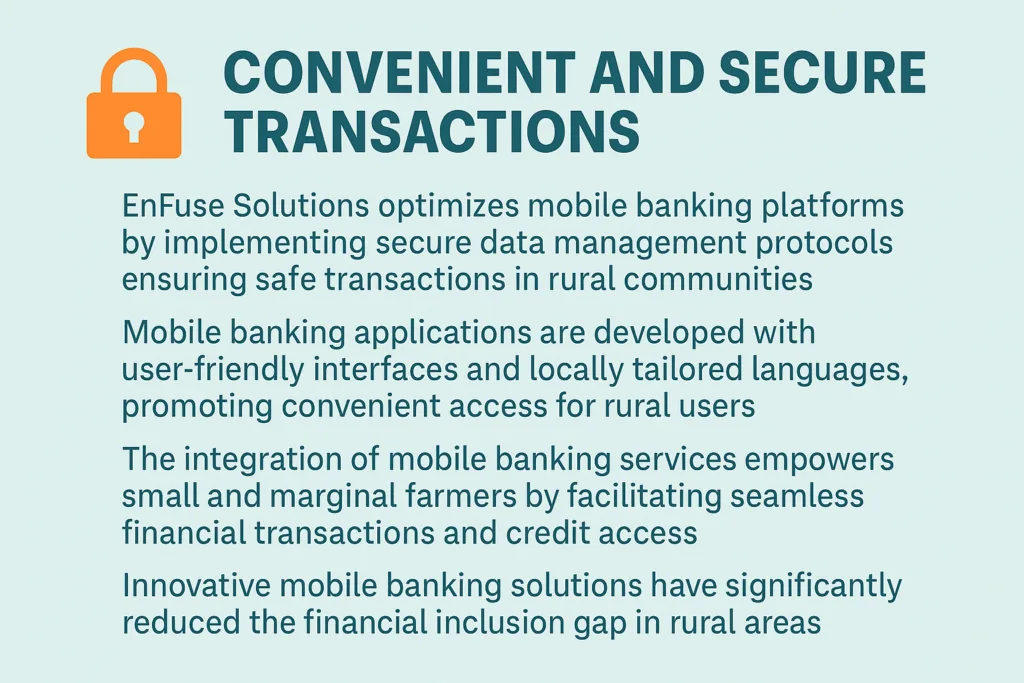
Security and convenience are critical factors in user adoption. Firms like EnFuse Solutions are optimizing mobile platforms with robust data security and intuitive UI/UX design.
Apps now offer biometric logins, encrypted transactions, and real-time fraud detection—ensuring that users feel secure using digital financial services.
For info on this subject go check out our blog PrimefinanceTech
Challenges in Implementing Mobile Banking
Despite significant progress, mobile banking in rural areas faces several barriers:
- Digital literacy: Many users still lack the knowledge to use mobile apps effectively.
- Internet connectivity: Poor infrastructure leads to unreliable or slow connections.
- Cost: Transaction fees and smartphone prices can be prohibitive for low-income users.
However, these challenges are not insurmountable. Ongoing education programs and network infrastructure investments are expected to reduce these barriers significantly in the coming years.
Infrastructure Limitations
Digital banking’s success hinges on strong digital infrastructure. Yet, many rural areas struggle with low connectivity and poor mobile signals. Programs like BharatNet aim to expand fiber-optic networks to these underserved areas.
RBI‘s 2023 data shows a sharp rise in rural internet subscribers, suggesting that the future of mobile banking in these areas looks promising.
Digital Literacy Barriers
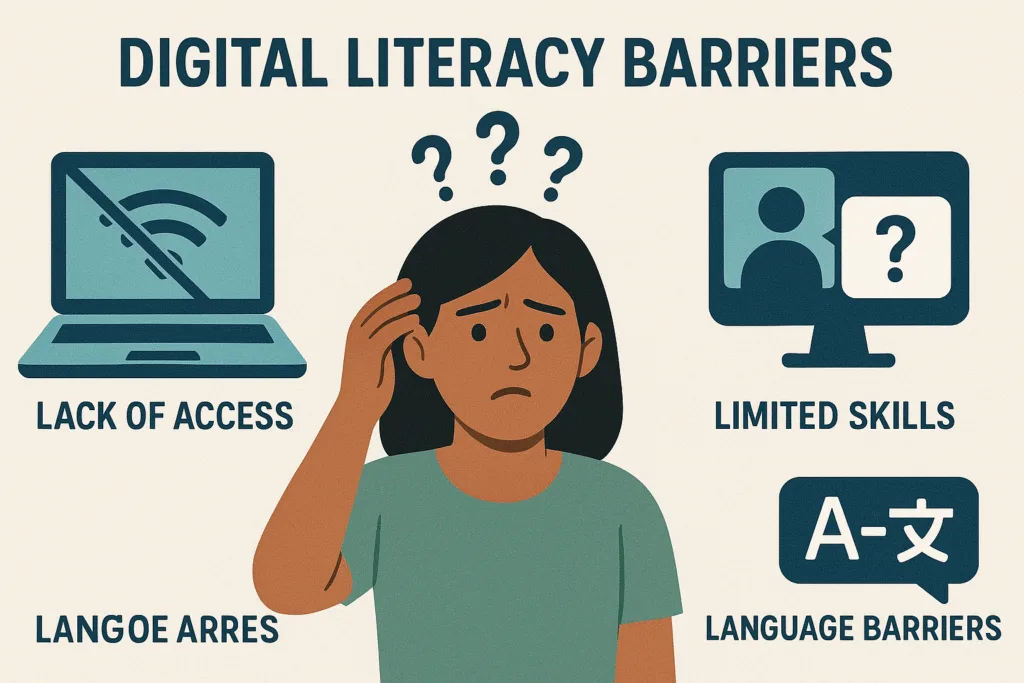
Low digital literacy is another roadblock. Many rural users struggle to operate smartphones, let alone navigate mobile banking apps. This limitation often leads to reliance on intermediaries, which can compromise data security and increase costs.
Government and NGO-led workshops are helping bridge this gap, and mobile apps designed with intuitive UIs and regional languages are making significant inroads.
Trust and Security Concerns
Skepticism about digital finance is high in rural areas. Concerns around data privacy, fraud, and system reliability hinder trust in mobile banking platforms. Addressing these concerns requires targeted awareness campaigns and community engagement.
Security features like multi-factor authentication, real-time alerts, and local customer support are being deployed to build trust.
Case Studies and Success Stories
Real-life examples highlight the transformative power of mobile banking. Rural women-led cooperatives have leveraged mobile platforms to manage group savings, access microloans, and improve household income.
A 2022 Assocham-PwC study noted that mobile banking transactions in rural India had surged by 200% over three years. This surge reflects tangible benefits like increased savings rates, higher business transactions, and better credit access.
Check out our post on Neobank vs. Traditional Bank to learn more about digital banking
Impact on Individual Entrepreneurs
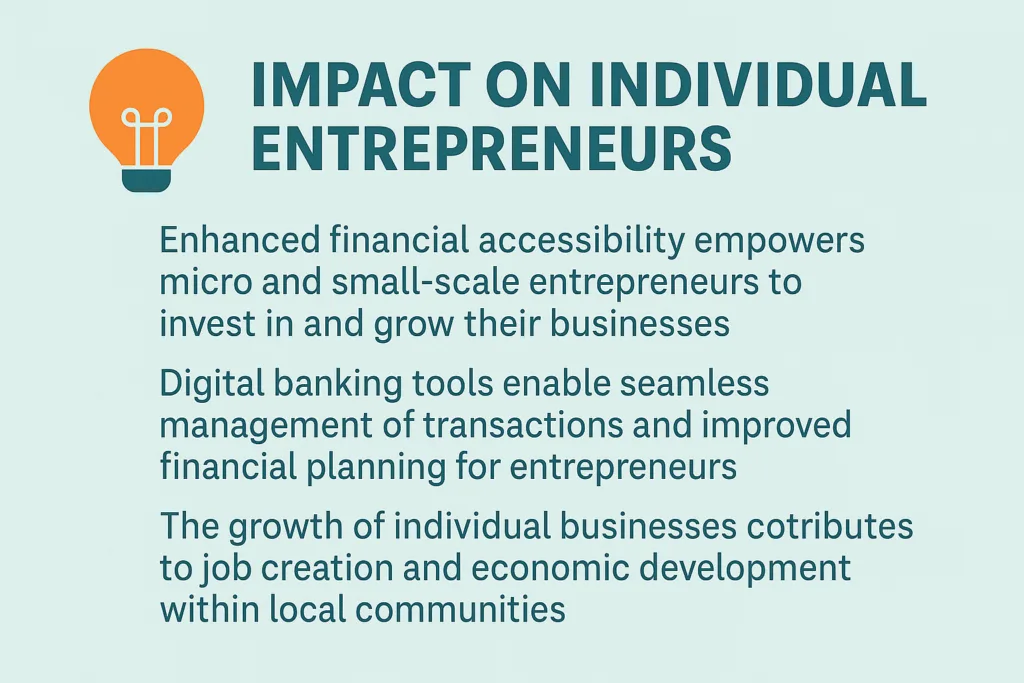
For individual entrepreneurs, mobile banking provides a lifeline. These users gain access to capital, can process payments instantly, and manage cash flows without physically visiting a bank.
Localized apps support small-scale vendors and artisans by making financial tools more intuitive and accessible. This ease of access supports business stability and expansion.
The Role of EnFuse Solutions
EnFuse Solutions has played a pivotal role in modernizing mobile banking for rural areas. They offer scalable solutions that help financial institutions customize services for diverse rural needs.
Their technologies include:
- Data management platforms
- Secure mobile architecture
- AI-driven personalization
These innovations ensure mobile banking platforms are not only secure but also efficient and inclusive.
Facilitating Digital Transformation
Mobile banking drives digital transformation in rural economies. The combination of technology and grassroots financial engagement enables more people to access formal banking.
EnFuse Solutions works with financial institutions to build systems that offer seamless onboarding, customized financial products, and safe transaction environments.
Collaboration with Local Communities
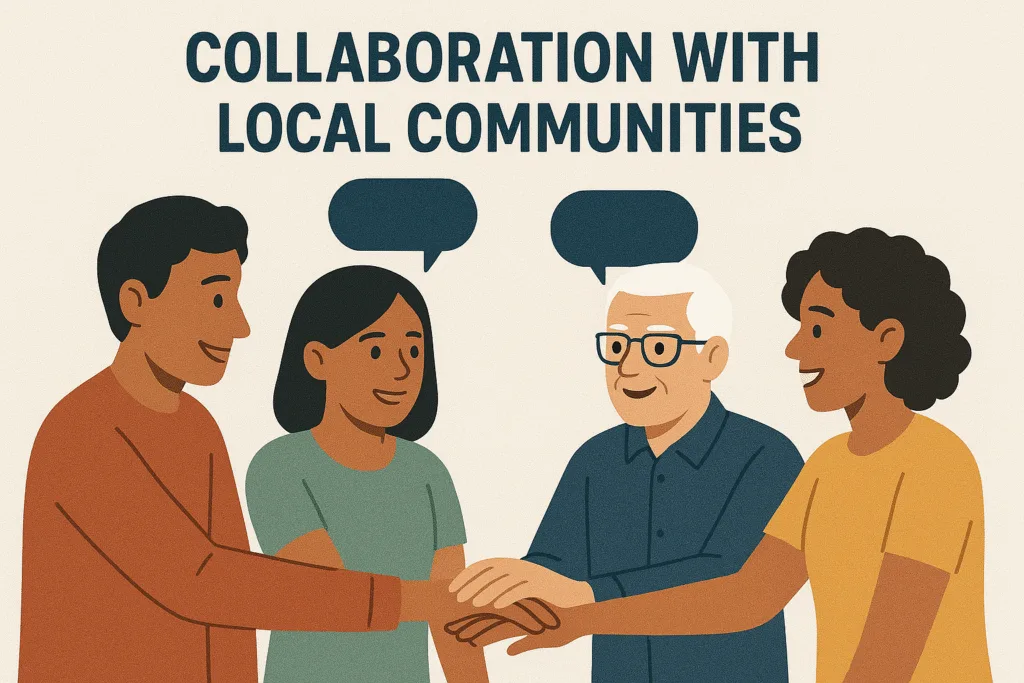
EnFuse and other fintech providers collaborate with local communities to deliver mobile services that resonate with users. Language support, cultural sensitivity, and real-world use cases make these services relatable and accessible.
Local partnerships also aid in digital literacy training and adoption awareness, fostering trust and widespread use.
The Future of Mobile Banking in Rural Areas
The outlook for mobile banking in rural India is highly optimistic. Initiatives like BharatNet are set to drastically improve connectivity. With projected internet subscriber growth and smartphone affordability, digital financial inclusion is poised to reach new heights.
Mobile banking will continue to serve as a low-cost, scalable solution for financial inclusion. Innovations in fintech, AI, and secure cloud computing will further streamline services.
Ongoing Technological Advancements
Emerging technologies are reshaping mobile banking. AI-powered apps offer personalized services. Blockchain enhances transaction security. And 5G networks will ensure faster access to financial services.
The mobile banking industry is projected to grow at a CAGR of 16.8% from 2023 to 2032, highlighting its massive potential.
Strategic Plans for Wider Adoption
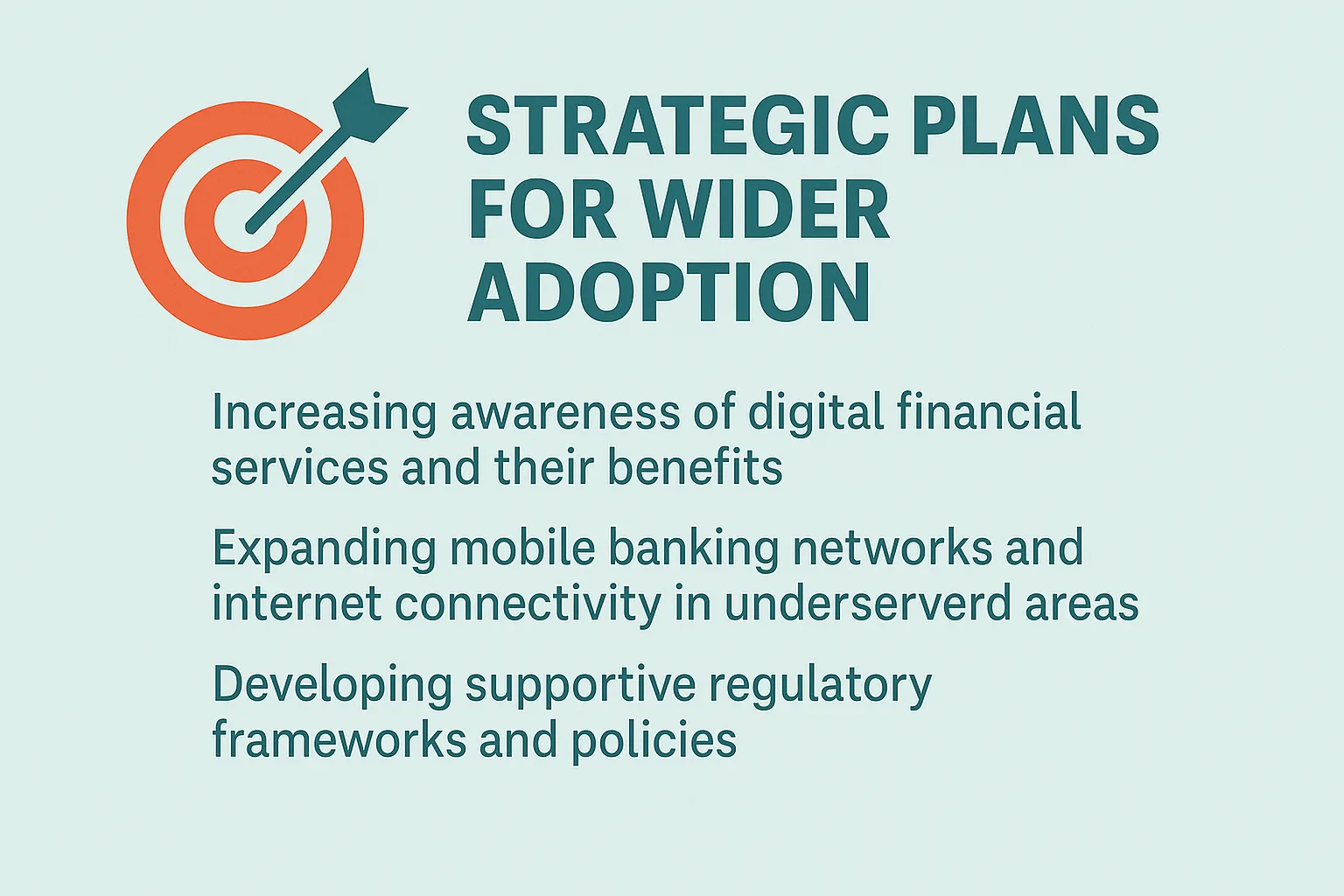
To accelerate adoption, strategic plans must focus on:
- Localization of apps
- Incentive-driven onboarding
- Partnerships with government schemes
Improved outreach through community events, digital literacy training, and simplified user experiences will help onboard more users.
Long-term Impact and Sustainability
Long-term benefits of mobile banking include:
- Improved household financial management
- Increased access to credit
- Higher savings and investment
These benefits align with global sustainability goals, fostering inclusive and equitable growth.
Conclusion: Mobile Banking as a Catalyst for Rural Empowerment
Mobile banking has emerged as a powerful tool to bridge the urban-rural financial divide. With ongoing support from public and private sectors, its reach will only grow.
Rural populations are not just adopting digital banking—they’re thriving because of it. With the right policies, partnerships, and technologies, mobile banking will continue to empower India’s rural economy.


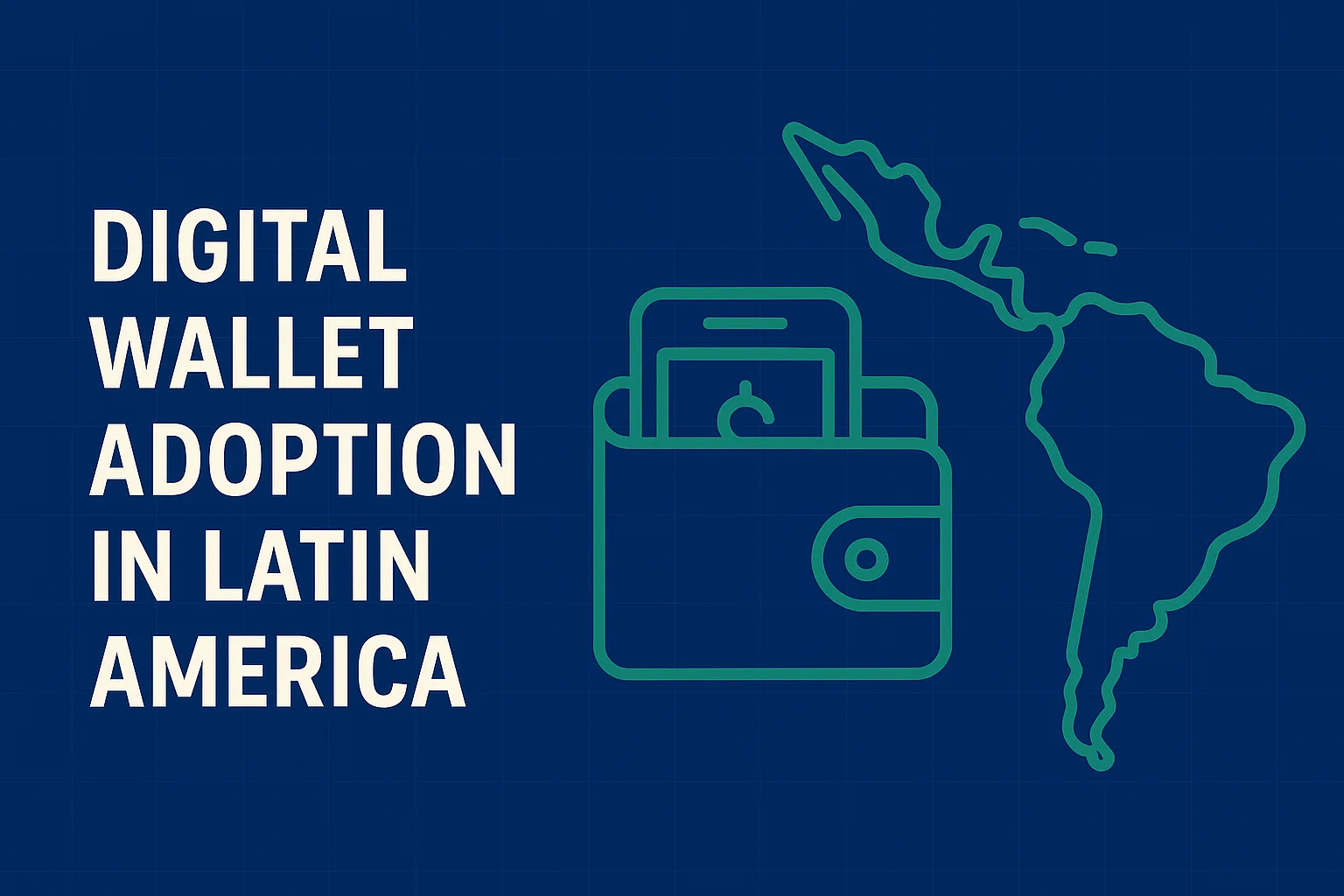
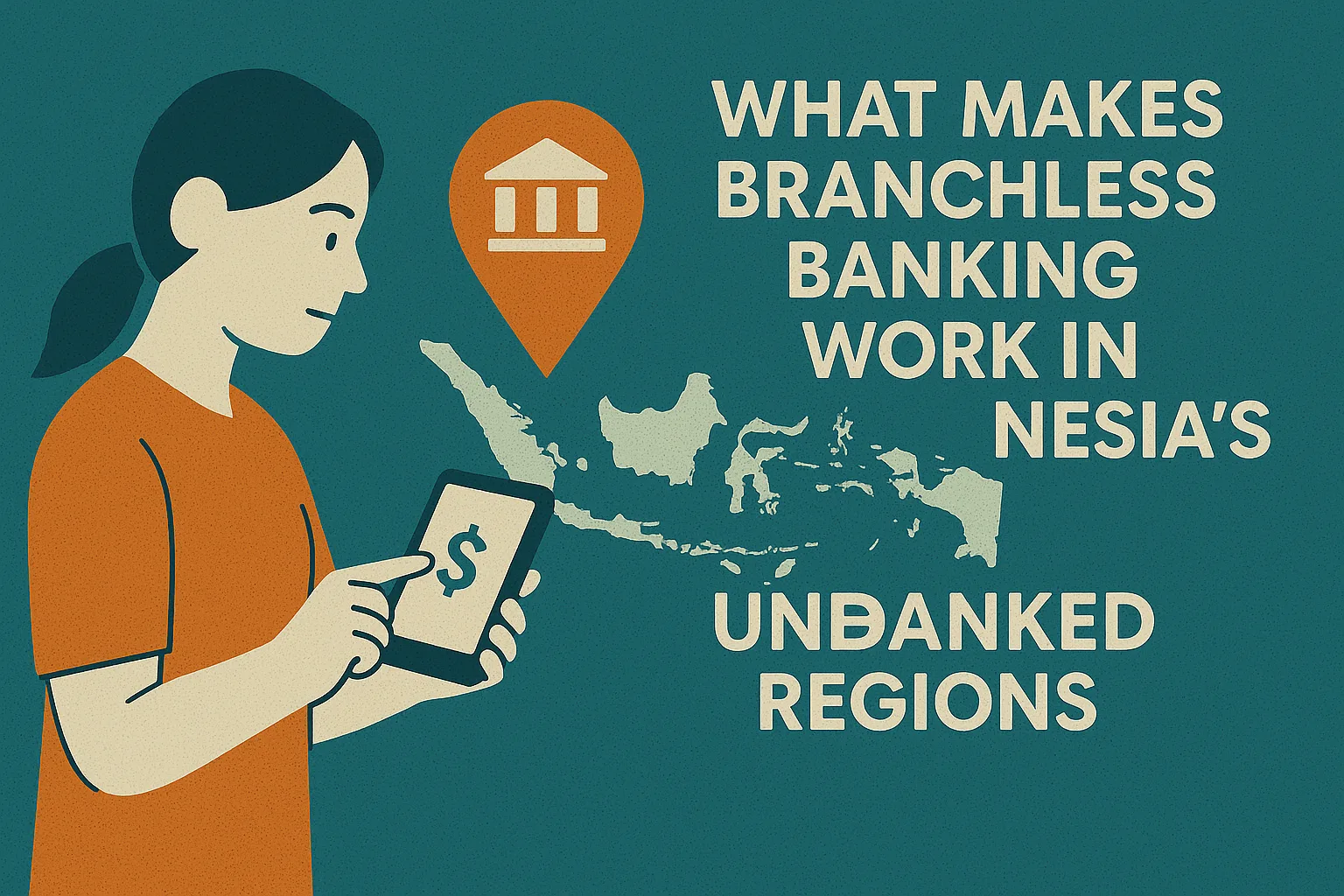
Hey there would you mind sharing which blog platform you’re working with? I’m planning to start my own blog soon but I’m having a difficult time selecting between BlogEngine/Wordpress/B2evolution and Drupal. The reason I ask is because your design and style seems different then most blogs and I’m looking for something unique. P.S Apologies for being off-topic but I had to ask!
Hello,
We are using WordPress—it’s flexible, widely supported, and allows for full customization to achieve a unique design and style.